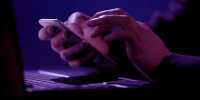The magic is in technology, not in the wizarding world. Computer scientists at the University Of Washington (UW) have found a way to make every Harry Potter fan’s dream come true by bringing two-dimensional images to life. An algorithm called Photo Wake-Up uses augmented reality tools with the ability
to bring animated movements from a two-dimensional photo or piece of artwork to an object, allowing them to walk, run, and even jump.
“This is a very difficult fundamental problem with computer vision,” said Ira Kemelmacher-Shlizerman, co-author of the study, in a statement. “The big challenge here is that the input is only from the position of a camera, so the part of the person is invisible. Our work combines artistic creativity with technological
advances in an open field problem. Moving images of superhero Ironman, basketball superstar Steph Curry, Even the abstract central characters in the famous Picasso and Matisse artworks
highlight the power of algorithms to enliven images. It first identifies a person or objects in an image and creates the outline of their body, which researchers call a “mask.” A 3D template is then matched and wrapped around the body position
so that the object plays a multi-dimensional role in the two-dimensional background. Data is stored in each pixel to track the distances between different points on the body of the object for fluid motion which the algorithm then maintains by placing the underwear behind the original texture colors and patterns.
Co-author Brian Curless says, “There have been some works before that try to create 3D characters using multiple viewpoints.
“But you still haven’t been able to bring anyone alive and get out of any of their scenes, and you haven’t been able to bring RR into it. It’s really amazing that we can get some great results using just one photo.”
This was once thought impossible, but the researchers wrote in their study that the pre-print site RXIV is available for reading,
that their work can enliven children’s artwork, add depth to museum exhibits, and even provide a realistic perspective on the video game experience. Photo Wake-Up currently works best with forward-images. The researchers will present their work at the annual conference on computer vision and pattern recognition in Southern California later this month.















